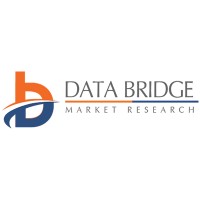
Introduction
In today’s complex enterprise landscape, many organizations are turning to hybrid cloud models—combining on-premises, private cloud, and public cloud resources—to run key business systems. When it comes to implementing Microsoft Dynamics 365 in such a hybrid environment, organisations must pay special attention to regulatory compliance, data residency, security, and operational governance. This article explores how to approach the deployment of Microsoft Dynamics 365 in hybrid cloud setups, focusing on compliance drivers, strategy, architecture, implementation best practices, and the role of service providers offering Microsoft Dynamics 365 implementation services.
Why Hybrid Cloud + Microsoft Dynamics 365?
Hybrid cloud deployments offer the best of both worlds: the scalability, agility and innovation of public cloud, combined with control, data residency and compliance guarantees offered by on-premises or private cloud components. For Microsoft Dynamics 365—an integrated suite of ERP and CRM business applications—this means you can run regulated workloads or sensitive data in a controlled environment, while using cloud-native capabilities for agility, analytics and scalability.
Key drivers for hybrid cloud in the context of Dynamics 365 include:
- Data residency & sovereignty: Some regulations require certain data to remain in-country or in-specific jurisdictions, or to be stored on-premises or in a dedicated environment. A hybrid model allows you to keep regulated data on-premises or in a compliant private cloud while using the public cloud for less regulated workloads. For example, the Microsoft Azure compliance page notes that Azure’s compliance documentation covers services including Dynamics 365 and Power Platform.
- Regulatory, audit & control requirements: Industries such as finance, healthcare, manufacturing, and government often require strict audit trails, access controls, encryption, and traceability. Using hybrid deployments allows you to meet those controls while still gaining cloud benefits.
- Latency, performance or legacy integration: Some organisations may have legacy on-premises systems (for example master data, operational systems) requiring low latency or local connectivity, which makes hybrid more feasible than fully cloud.
- Risk management & business continuity: Hybrid architecture can support resilience and disaster recovery by spreading workloads and backups across cloud and on-premises, which helps in structured compliance and governance frameworks.
Compliance Imperatives for Dynamics 365 Hybrid Deployments
When you deploy Dynamics 365 in hybrid clouds, consider the following regulatory and control dimensions:
- Data classification & protection: Sensitive or regulated data must be classified (e.g., PII, financial, health) and protected accordingly (encryption at rest/in transit, role-based access, audit logs). A hybrid model must ensure that these protections persist across environments.
- Data residency & sovereignty: Regulations may mandate that certain data stays within a jurisdiction. Hybrid cloud allows you to keep that data on-premises or in a certified local cloud while connecting to global public cloud resources.
- Identity & access control: Consistent identity management across on-premises and cloud is critical. You must enforce principle of least privilege, multi-factor authentication, conditional access, and track privileged access.
- Audit, monitoring & logging: You need unified monitoring and logging across both the on-premises/private and public cloud parts. Gaps in visibility can lead to non-compliance.
- Shared responsibility & vendor management: In hybrid models you must clearly understand which controls are the cloud provider’s responsibility and which remain yours (especially for on-prem or private cloud). Documentation and vendor contracts matter. For example, hybrid cloud security best practices emphasise unified visibility, identity management and policy enforcement across environments.
- Governance and change management: Changes in architecture or control frameworks must be governed to ensure compliance. Hybrid deployments often increase complexity, making governance more important.
- Business continuity & resilience: Regulatory frameworks often impose requirements for backup, data recovery, testing failover. Hybrid deployments must satisfy these across environments.
- Auditability for systems of record: If Dynamics 365 acts as a system of record (e.g., financials, regulatory reporting), then you must ensure the hybrid deployment supports audit trails, retention policies, and meets industry-specific regulatory standards (e.g., GDPR, HIPAA, PCI DSS). Azure’s compliance documentation forecasts this.
Architectural Approach: Dynamics 365 in Hybrid Cloud
Here is a typical architectural strategy for deploying Dynamics 365 in a hybrid cloud environment:
- Segmentation of workloads
- On-premises / private cloud: Use for sensitive data, critical systems of record, data residency constrained workloads.
- Public cloud (Azure + Dynamics 365 SaaS): Use for flexible modules, extensions, analytics, mobile/remote access, global user base.
- Data orchestration/integration layer: Connect these with secure networking (VPN, ExpressRoute), hybrid identity (Azure AD connected with on-premises AD), and data flow governance.
- Unified identity & access
- Use Azure Active Directory (or hybrid identity) to manage access across on-premises and cloud.
- Enforce multi-factor authentication, conditional access, privileged identity management.
- Ensure privileged roles are audited and logged.
- Data protection & residency enforcement
- Define data classification taxonomy and tag data appropriately.
- Use encryption at rest and in transit.
- Apply data residency controls: ensure regulated data stays in permitted region/private environment; other data can reside in public cloud.
- Use Azure Policy, Azure Arc, or other tools to enforce location, classification, retention policies. Microsoft Azure compliance documentation covers this.
- Monitoring, auditing & governance
- Implement centralized monitoring (e.g., Azure Monitor, SIEM) that covers both cloud and on-premises environments.
- Audit all access, changes to system configurations, privileged operations.
- Retain logs, archive per regulatory retention.
- Provide dashboards for compliance review.
- Resilience, backups & disaster recovery
- Take backups of critical on-premises systems and cloud systems.
- Replicate data and workloads across cloud and on-premises if required.
- Do regular DR testing and ensure compliance with required RTO/RPO parameters.
- Deployment of Dynamics 365 modules
- Identify which Dynamics 365 modules (Finance, Supply Chain, Sales, Customer Service) are to run on what environment.
- For modules requiring heavy cloud extension or remote access, use SaaS cloud. For modules with strict data sovereignty or on-site integration (e.g., manufacturing shop floor systems), consider a private/hybrid setup.
- Use integration services (Power Platform, Azure Integration Services) to connect modules across hybrid.
- Change management and ongoing operations
- Establish governance for updates, patches, security.
- Maintain documentation of control framework.
- Regular compliance reviews and audits.
- Continuous user training and adoption.
Implementation Best Practices for Microsoft Dynamics 365 in Hybrid Environments
When selecting a partner and executing the deployment, keep these best practices in mind:
- Align business and compliance drivers: Understand both the business benefits of Dynamics 365 and the regulatory requirements that apply to your organisation. Don’t treat compliance as an afterthought.
- Conduct a compliance-driven architecture review: Before deployment, map out data flows, identify regulated data, determine which workloads must remain on-premises or in a private cloud, establish connectivity and identity models.
- Select the correct deployment model: For each module of Dynamics 365, decide: cloud only, on-premises only, or hybrid. Use hybrid when a mix gives you optimized outcomes (e.g., regulated data on-premises + agile cloud services for analytics). This mirrors guidance on deployment options for Dynamics 365 Business Central.
- Enforce consistent security policies across environments: Use a consistent “single pane” security governance model. Use Azure Policy, Azure Arc, unified SIEM, and conditional access to enforce controls irrespective of location.
- Automate and orchestrate as much as possible: Use automation for identity provisioning, patching, backup, compliance scanning, and policy enforcement. This reduces human error and helps with audit readiness.
- Address vendor and shared-responsibility model: Clearly define which controls your organisation is responsible for (especially for the on-prem/private portion) and which the cloud provider handles.
- Use dashboards, evidence and documentation for audit: Make sure you have audit trails, log retention, access logging, and documentation supporting compliance.
- Focus on user adoption and change management: Even the best architecture fails if users don’t adopt it well. Use training and support, especially as hybrid setups may introduce more complexity.
- Plan for scalability and flexibility: Hybrid should enable you to adapt — for instance you might move more workloads to cloud in future, but must keep the compliance posture. Use Azure’s hybrid & multicloud guidance.
Benefits and Challenges
Benefits
- Meet data residency and regulatory demands while still gaining cloud scalability and innovation.
- Flexibility to allocate workloads based on risk, performance or integration needs.
- Improved business continuity via hybrid redundancy.
- Unified platform for ERP/CRM that spans on-premises and cloud.
Challenges
- Complexity in managing hybrid environments (security, identity, monitoring).
- Increased governance burden to maintain compliance across multiple domains.
- Integration and data synchronization issues between on-premises/private and public cloud.
- Potential cost/regulatory trap if hybrid boundaries aren’t clearly defined or managed.
- Ensuring vendor stack and change management support both environments seamlessly.
Top Service Providers for Microsoft Dynamics 365 Implementation Services
When deploying Microsoft Dynamics 365 in a hybrid cloud environment with a compliance focus, partnering with an expert service provider is critical. Here are some of the top providers to consider:
1. InTWO
InTWO is a global Microsoft Solutions Partner specialising in Microsoft cloud technologies including Dynamics 365, Azure, Modern Workplace, Data & AI. They have more than 25 years of experience, operate across multiple continents, and offer comprehensive Microsoft Dynamics 365 implementation services, including consulting, migration, customization, and managed services.
They emphasise data security, global deployment capability, and compliance-focused services—making them a strong fit for hybrid cloud deployments where regulatory requirements are significant.
2. (Other leading providers)
While a full list would go beyond scope, other global and regional Microsoft Dynamics 365 implementation-services providers include firms experienced in hybrid cloud, ERP/CRM rollouts, and regulated industries. For example, look at firms listed in “Top International Microsoft Dynamics Partners.”
Criteria for selection: When choosing a provider, evaluate their hybrid cloud expertise, regulatory compliance track record, global deployment experience, managed services and support, identity/security capabilities, and industry-specific knowledge.
Why Choose InTWO for Your Microsoft Dynamics 365 Implementation Services?
- They are certified as a Microsoft Solutions Partner for Business Applications and have access to the latest Dynamics 365 modules and Azure capabilities.
- They offer global reach (presence across six continents) and can support multi-entity, multi-location and regulated deployments.
- They emphasise secure migration, safeguarding data during legacy-to-cloud transitions—a key factor in hybrid/compliance deployments
- They provide end-to-end services: consulting, implementation, integration, training, post-go-live support, which aligns well with hybrid deployments that require more governance and ongoing management.
Conclusion
Deploying Microsoft Dynamics 365 in hybrid cloud environments presents an excellent opportunity for organisations that must balance cloud innovation with regulatory compliance. By carefully segmenting workloads, enforcing unified security and governance, and partnering with a service provider skilled in hybrid deployment and compliance (such as InTWO), organisations can achieve a robust, compliant, scalable Dynamics 365 deployment.
With thoughtful architecture, rigorous controls, and the right implementation strategy, you can derive the full business benefits of Microsoft Dynamics 365 while meeting your regulatory obligations and protecting your most critical data.



